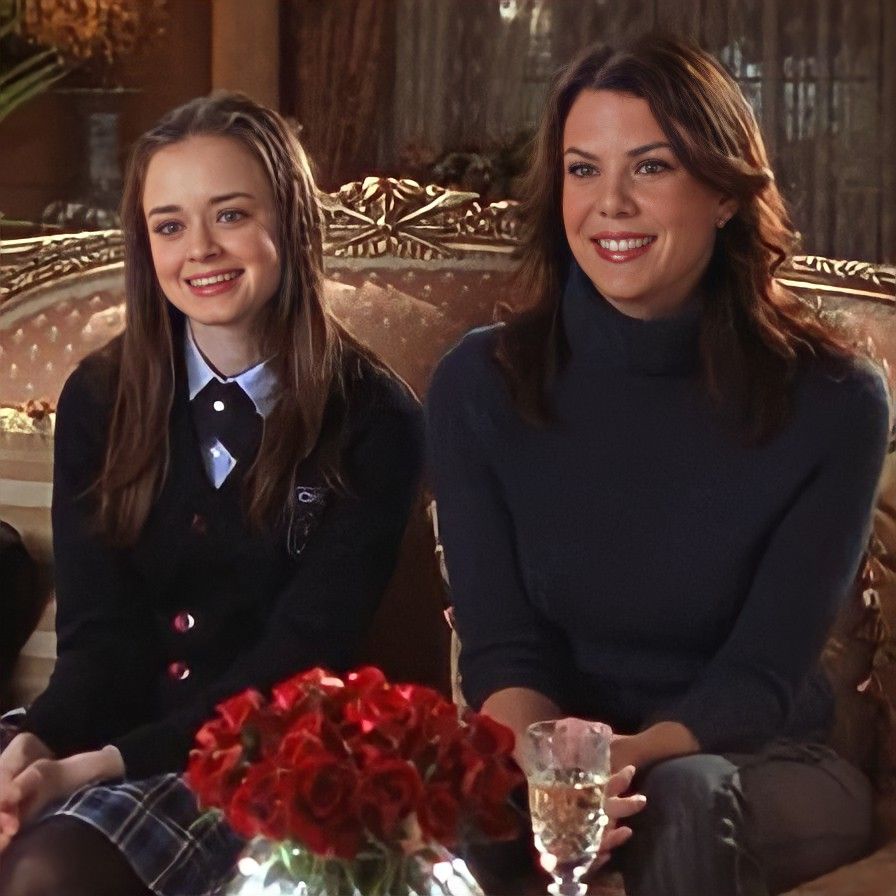
I’ve never been much of a telly person. Growing up, I always preferred books, much to my parents’ delight. However, this year, I decided to catch up on series that are frequently referenced online. At the top of the list are a few series that dominate the scene: Breaking Bad, Naruto, Star Wars, and shows like Gossip Girl, Desperate Housewives, Sex and the City, and of course – Gilmore Girls. My introduction to Gilmore Girls mainly came through TikTok aesthetic snippets.
The quaint and comforting narrative depicted in Gilmore Girls resonates with a generation experiencing more uncertainty and anxiety than ever before. It’s no wonder that many young people feel nostalgic for the early 2000s – the outfits are fun, feminine, and non-corporate, and the era harks back to a time before political divisiveness and the overwhelming circulation of information.
Watching the quirky single mum, Lorelai, excel as a manager at the Independence Inn in the small town of Stars Hollow while raising her academically-gifted and beautiful teenage daughter, Rory, gives us the reassurance that everything will turn out alright.
One of the main criticisms of the series is its unrealistic portrayal: how do Lorelai and Rory grow up to be “best friends” while Lorelai maintains all her commitments at work and as a mum? Part of the fantasy of Gilmore Girls is this notion that a girl can be extremely close to her mother with little to no conflict on a daily basis. As humans, we crave closeness to others, and seeing Rory and Lorelai start out so close and live in a small town where “everyone knows each other” and connection seems nearly effortless offers the audience the fantasy that human relationships can be extremely smooth-sailing and fulfilling.

For example, Sookie is the chef at the Independence Inn in Stars Hollow. She’s Lorelai’s colleague and best friend. Realistically, how likely is it to become best friends with someone at work and work side by side for 10 years with nearly no spats or quarrels? Sookie is lovely but very absorbed by her passion – cooking. She is capable of prioritising the quality of her food over nearly everything, which isn’t the best for relationships. The interesting thing about this character is that although Sookie is lovely and bubbly, she’s forgetful, overwhelming, and would be overall an insufferable friend to have – But in the magical world of Stars Hollow, she gets married, has children, and maintains healthy relationships.
Likewise, there is a massive paradox when it comes to Lorelai and Rory’s financial situation – Lorelai and Rory live off Lorelai’s salary, no alimony or anything, and manage to live in this big house and can get all the financial support they want from Lorelai’s parents (Emily and Richard) when it comes to Rory’s schooling, and they spend like crazy on takeout and coffee – Yes, everyone is talking about the takeout.
Regardless of all these contradictions, this series is a comfort blanket because it’s a very feminine-centered series where there is no REAL danger. For example, there aren’t many antagonists in this series – Taylor (the strict mayor), Paris (Rory’s rageful and perfectionist classmate), or Michel (the disagreeable concierge) are closer to being friends than foes.
In the Gilmore Girls’ universe, major problems like addiction or violence do not seem to exist. There is not one point where it seems like Lorelai or Rory really lose anything permanently – For example, Lorelai’s main love interest, Luke Danes, the owner of the diner, breaks up with her at one point, the pain and grief of that relationship loss doesn’t last – he comes back to her. Similarly, Rory’s breakups are usually easily cushioned by a new love interest. When she breaks up with her first boyfriend, Dean, Rory is already invested in Jess. After she breaks up with Jess, Rory spends a bit of single time but it isn’t long before she meets Logan.
So the appeal of Gilmore Girls is living in a fun and friendly world where goals are achievable, and the obstacles are limited.
This was written by our contributing writer, Suzanne Latre.
Leave a Reply